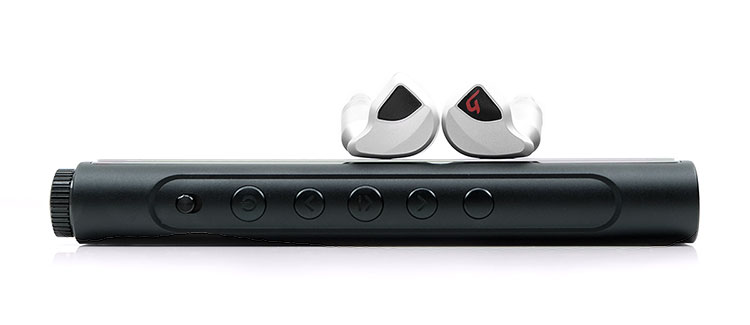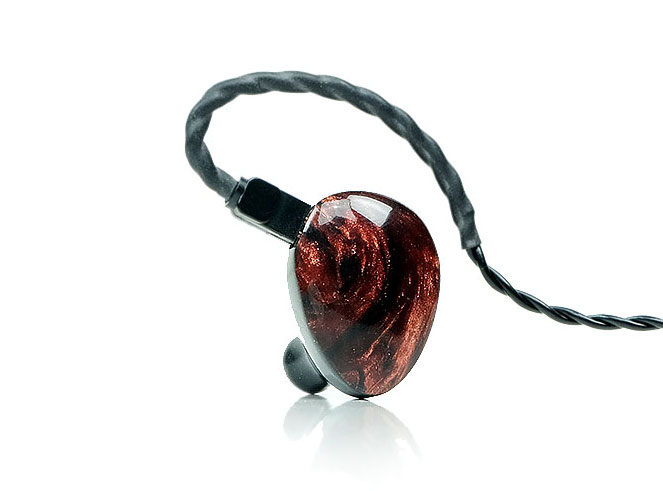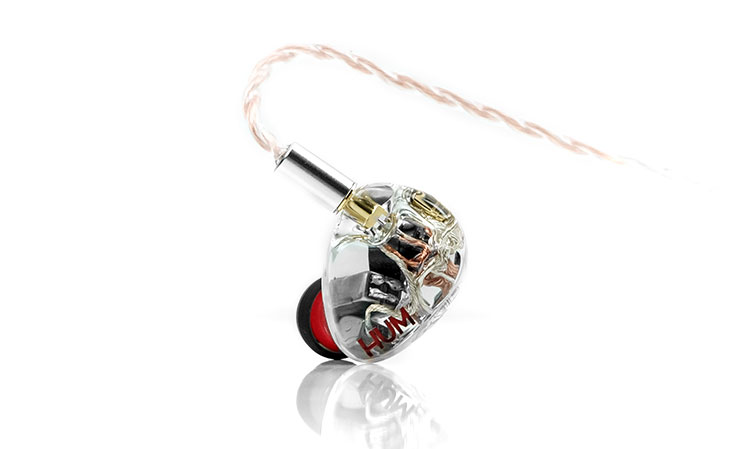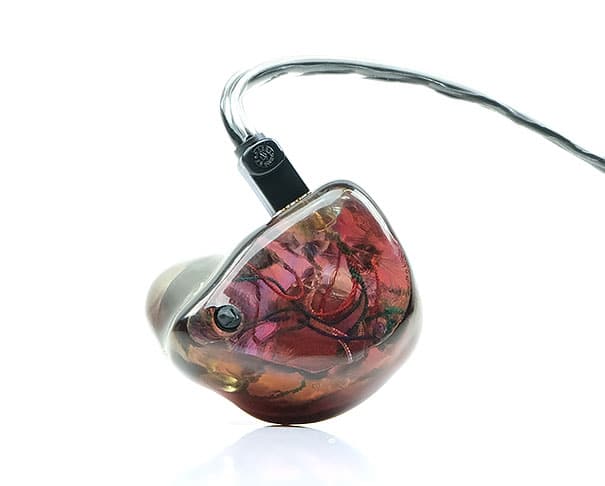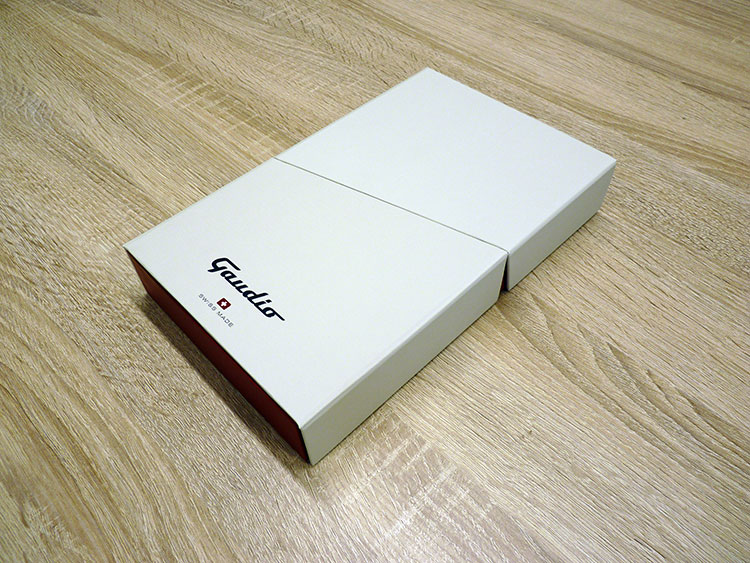Gaudio Nair & Clariden Sound Impressions
Gaudio Clariden
The Clariden seems to follow a more classic U-shaped FR with more of a sub-to-mid emphasis and elevation as well as a slightly warmer fuller sound signature than the Nair below 1k.
This is balanced out with an upper-mids lift and vocal emphasis and a higher-pitching percussion presence. The treble also has some sustain from 7-10k so it is forward and sparkling but not out of sync with the rest of the signature unless paired with a bright source.
For me, the Clariden seems to be aiming for the key points in the FR that we tend to pick out very easily on casual listening, namely the low-end, vocals/percussion, and clarity beyond.
The extension is stronger on the low-end so this is the more powerful sounding of the two monitors. The lower-mids dip and tuck behind vocals, particularly female vocals which are fairly forward creating a more intimate staging effect and stretching ‘front to back’ staging effect rather than out super-wide.
The headroom delivered by the upper BA driver is very good on the Clariden with plenty of air but it also introduces a stronger odd-harmonic BA-type texture into the mids timbre. It is a strong contrasting sound with the low-end delivering some good warmth and body. However, at times it creates more of an ethereal and sharper overtone on instrumental and vocal notes above 1k.
Gaudio Nair
The Nair seems the easier of the two IEMs for current requirements. It is the louder of the two on both test DAPs by a good 3-4 steps unbalanced. I suspect the SPL on the Nair is a little higher than the Clariden from my initial impressions.
The Nair tuning is indeed more reference as in more linear than the Clariden with a flatter low-end up to 1k before it elevates from 1k onwards. In fact, beyond 2k I honestly do not hear a lot of unevenness in the Nair’s tuning so it is very consistent sounding.
I honestly prefer the treble on the Nair compared to the Clariden. The control is very good but the balance and solidity in the Nair treble are better. It sounds a shade wetter but not hugely rolled off. It does not have the same sparkle as the Clariden but it more solid in its harmonic balance with less of an ‘ethereal quality’.
That solidity bodes well for a pacey mids delivery which sounds superbly balanced. Yes, vocals, particularly female vocals have a bias but the overtone lacks any harshness or nasty metallic overtones.
This is more of a mic-centric tuning compared to the Clariden and one that will favor mids and treble enthusiasts. However, the bass is tight, very tight indeed. It does not sound puny either with some good extension albeit with a BA timbre to it.
Synergy
Efficiency
The Nair is the slightly easier of the two to drive despite the higher impedance rating. As mentioned, the Nair is likelier to have the higher of the two IEM SPL ratings.
Mind you, both are not that hard to drive with both sitting very comfortably between 50-60 steps unbalanced low-gain on the FiiO M15 test source. Neither are that prone to background hiss either which is a big bonus for me.
It is unlikely you would require any substantive to drive either monitor so synergy from the source pairing is going to be more about sound preference than power.
Pairings
Despite the variation in tonality, I was not a huge fan of tonally neutral or bright sources with either monitor.
The FiiO M15 was acceptable with the Nair though I felt the pairing lacked a bit of character. The pairing perhaps sounded too much of a bland listen and more of a dry “monitoring experience” which may well appeal to some. The Clariden has a bit more verve with the M15 but at the cost of a bit more treble exaggeration which is not ideal. I tended to EQ down that 4k and 8k banding by a few dB to get the right blend.
The Cayin N6ii with the E01 motherboard has a better synergy with the Clariden. The slightly softer source signature takes a tiny bit of the edge off the Clariden treble and places it closer to where I like a high contrast sound signature to sound like, clean, clear but not “hot” or tizzy sounding.
The Nair sounded very smooth also with the E01 pairing, particularly female vocals which sounded way more natural than the M15 pairing. However, I felt the slightly languid pace fo the E01 less suited to the Nair’s tuning. I much preferred the pacier and more bombastic tuning of the Lotoo PAW 6000 with the Nair. The low-end has a bit of weight and presence but more importantly, the mids are more vivid and engaging without vocals becoming shouty.
Select Comparisons
Noble Audio Savant II
$499
Technical
The Savant II is priced a bit lower than the Clariden and Nair although the original Savant was closer to the current Gaudio promo prices. The sound profile is more in line with the Clariden than the Nair so that is the one we will compare with.
The Savant II is a dual balanced armature driver configuration as opposed to the triple BA mix inside the Clariden. Both are universal monitors though the design approach is very different. The Savant II is a Wizard design meaning it an acrylic material, small and compact with a unique custom designed faceplate.
The Clariden is much bigger, but also much more durable and with a chiseled aluminum design that I find to be no less impressive. One is minimalistic and clean in aesthetics and the other vibrant and exotic looking.
Both have a very comfortable fit but because the Savant II is so small and light the Gaudio has a competitively weighted presence in your ear. Both are rock solid and both secure pretty good so there are no issues there.
The Clariden isolates a little bit better but that’s down to the superior Final E tips supplied compared to the stock silicone on the Savant II. Switch them around and the Savant II seals just as good.
I give the edge to the Clariden also for the superior stock Satin Audio cable. The Savant II came with a bland 4-wire OFC shrink-wrap creation that I rarely use as it attenuates the dynamic range a lot.
Performance
Tonally, the Savant is the warmer of the two and when I say warmer I mean right through the range with a low-end that is mid-bass warm and not a huge dip either into the mids. It actually remains relatively consistent up to 2k where it gets a bump for vocal forwardness. The Clariden has a bit more sub-bass presence and it sounds a bit more linear coming into the mid-bass with less bloom into the lower-mids.
I suspect there is more of a drop on the Clariden from 200Hz to 1k compared to the Savant II. As a result, there is more bass to mids separation and less warmth bleeding into the mids on the Clariden. Bass layering and impact is tighter on the Clariden and the extension is a more palpable than the Savant II’s mid-bass bias.
Midrange body and warmth are richer and more prevalent on the Savant II with the Clariden a bit cleaner and leaner sounding for instrumental notes. The Savant II draws a lot more from the mid-bass bloom than its treble which is rolled-off beyond 3-4k with little in the way of airy bumps thereafter.
This is the big difference for me between these two, the treble and how it tilts the harmonic balance and timbre. The treble is a lot more pushed on the Clariden to create that contrasting sound but it also gives it a shaper partial overtone on instrumental timbre. The Savant II is a lot more forgiving and smoother but has far less headroom and not as much separation as the Clariden.
Vocals are richer and smooth on the Savant II whereas on the Clariden it is clean and ethereal sounding. The Clariden draws a lot from its odd-harmonic treble forwardness so it is a bit drier with more of an attack and quick decay focus whereas the Savant II delivery is more on the body or sustain.
Hum Dolores
$1699
Technical
I picked out the Dolores because of how it positions itself also on the high-end of things without stuffing it full of drivers. This is a similar tact to Gaudio’s approach. In fact, the Dolores is a lot more expensive with a 2 unit, 3 driver configuration similar to the driver count inside the Clariden and Nair. Because of the Dolores sound profile, this is a good comparison to the Nair’s reference tuning.
The Dolores places a lot of emphasis on its crossover design and also uses an inductor for the low-pass filter. The Dolores configuration also has a very precise 1.8k crossover point whereas the crossover in the Nair is a 3-way design. The contrast in philosophy here is stark where Hum believes that fewer crossover points mean less phase shift challenges over narrows bandwidth groupings.
Designs are very different also with the Dolores using a transparent acrylic and a quasi custom-universal shape. It is a huge contrast to the dense clean CNC machined aluminum aesthetic of the Nair. It also means the Dolores is light but not significantly smaller than the Nair in the ear though both seal much the same with the Final E Tips.
Cables
Both IEMs have excellent cables though the Nair uses 2-pin 0.78mm connectors whereas the Delores uses an MMCX termination. The Dolores Tara is a 0.1mm x 17 strand 26 AWG 99.99% pure copper wire build using a transparent Dupont TPE jacket.
The Nair cable uses SPC as opposed to just copper with Stain Audio’s Hyperion. This is a 1.2m 28AWG wire using SP-OCC Pure SPC Type 2 Litz geometry. The Hyperion is a little lighter and more pliant for me but the Tara is a bit more microphonic free in application.
Performance
These are a lot closer than you would imagine them to be given the price difference. However, the sound signatures of both, though in the same ballpark, are not carbon copies.
The first thing that leaps out is the extent of warmth in the timbre of both. The Dolores is way more linear than the Nair and with a neutral timbre making the Nair sounds a little fuller, richer in timbre with notes that have a slightly wetter overtone. The Dolores sounds very precise, very articulate, and with a little more treble extension.
The Nair is more relaxed in its treble, a quality I like most about it compared to the Clariden, and makes it for a very enjoyable midrange performer. However, some of that enjoyment is from a gently lifted low-end that you do not really notice until you place it against the flatter Dolores. That gentle lift is also responsible for that better lower-mids body and slightly fuller vocal tone from the Nair.
Staging height does favor the Dolores so you do get the better headroom and without any piercing forward treble to create that perception. However, it still the ‘glassier’ of the two treble performances and more of a hi-fidelity signature.
The faded treble on the Nair does clip its staging wings a little but also draws you more into the mids and vocal performances which on the whole deliver a bit more smoothness. The Nair might not be as technically complete but some may find it more flexible for a wider set of genres.
Lime Ears Psi
€625
Technical
The Psi is a little bit different from the other two comparisons being a custom IEM. However, like the Clariden and the Nair, it is a triple Balanced Armature driver design with a price point that is currently similar.
All 3 monitors use a passive 3-way crossover system and the grouping is much the same with all 3 using one for the lows, one for the mids and one for the highs. What makes the Psi unique is the deployment of Lime ear’s bass switch system which they have on their higher-end Model X and Aether R. That technically means it can bias more to a Clariden sound or the Nair sound.
In terms of design, the Clariden and Nair are very different since the Psi is a custom. It will seal better for sure, requires no tips and a perfect fit. It is also much lighter using acrylic with designs on spec. However, both the Gaudio Clariden and Nair are much more durable with that machined aluminum.
The cheap cable on the Psi is no match for the Stain Audio Hyperion on the Gaudio units. These P1tech-style 4-wire OFC cables are disposable in my eyes and really just there to get you going. A better cable such as the Hyperion will open up the dynamic range performance considerably.
Performance
Nair
Even with the bass switch off the Nair is the more neutral sounding of the two in terms of tonal accuracy and also much more mid-forward in terms of imaging. The Psi is relatively u-shaped with the bass switch off just not as exaggerated as with the switch on. You could almost argue it has shades of the Clariden without the treble forwardness, a warmer tone overall.
The Nair is drier but contextually drier so overall a more reference timbre with nothing shrill or smoothed over. You get less bass presence, less bloom but also a more intimate soundstage.
If you are into your vocals then the Nair is far ahead of the Psi as the pick of the two. However, it is not as deep not as extended so the Psi tends to paint a ‘picture’ beyond the mids a bit more whereas the Nair tends to draw you right into the singer’s delivery.
Clariden
With the bass switch on you get a lot more bass volume on the Psi but it also becomes a slightly darker proposition, especially compared to the high levels of bass/treble contrast on the Clariden.
I think here the Clariden does a better job in terms of clarity and detail. You can EQ that top-end of the Clariden down by 1-2dB just to take the edge of the presence and still get more headroom and articulation than the bass on Psi presentation.
I think the key aspect here is the low-end control. The Psi bass on status loses a bit and bleeds more into the mids warming them up so they sound very rounded and even-harmonic biased. The Clariden’s better contrast helps a lot with instrumental separation and creating some essential space for the instrumental separation to be clearly heard.
With the bass switch off the Psi is more competitive against the Clariden offering what I would describe as a more relaxed version of the Clariden’s high energy signature. It sounds a little juicier, warmer, and more forgiving. I would say it is a good alternative for the treble sensitive crew.
Our Verdict
Do I have a preference? Yes, it the Nair. After a few months, it is still the mid-centric vocal specialist monitor getting my attention. Then again, I am a vocal lover so no surprise there. The Clariden is more complex, more high energy with its bass and treble tilt so do match with care and go for a source that compliments that well. The Nair can pair with most things, it’s fairly flexible IMHO.
Where do these sit and who will buy them? Discerning audiophile springs to mind, the vocal lover for one, or the modern music enthusiast.
For a freshman debut, the Nair and Clariden are tastefully tuned and engineered to a very high level indeed. I was a bit concerned at the pricing since most 3-driver models tend to hover around the $500 marker aside from the Hum units.
However, Gaudio’s level of care and attention to detail to each monitor combined with the excellent quality 3rd party cable from Satin Audio is a definite confidence builder.
Gaudio Nair & Clariden Specifications
Clariden
- 3 Acoustic paths
- 3 Way-System
- 1 Bass Driver, 1 Mid Driver, 1 High Driver
- Impedance @1kHz = 17ohm
- Impedance average = 25ohm
Nair
- 2 Acoustic paths
- 3 Way-System
- 1 Bass Driver, 1 Mid Driver, 1 High Driver
- Impedance @1kHz = 26ohm
- Impedance average = 25ohm


